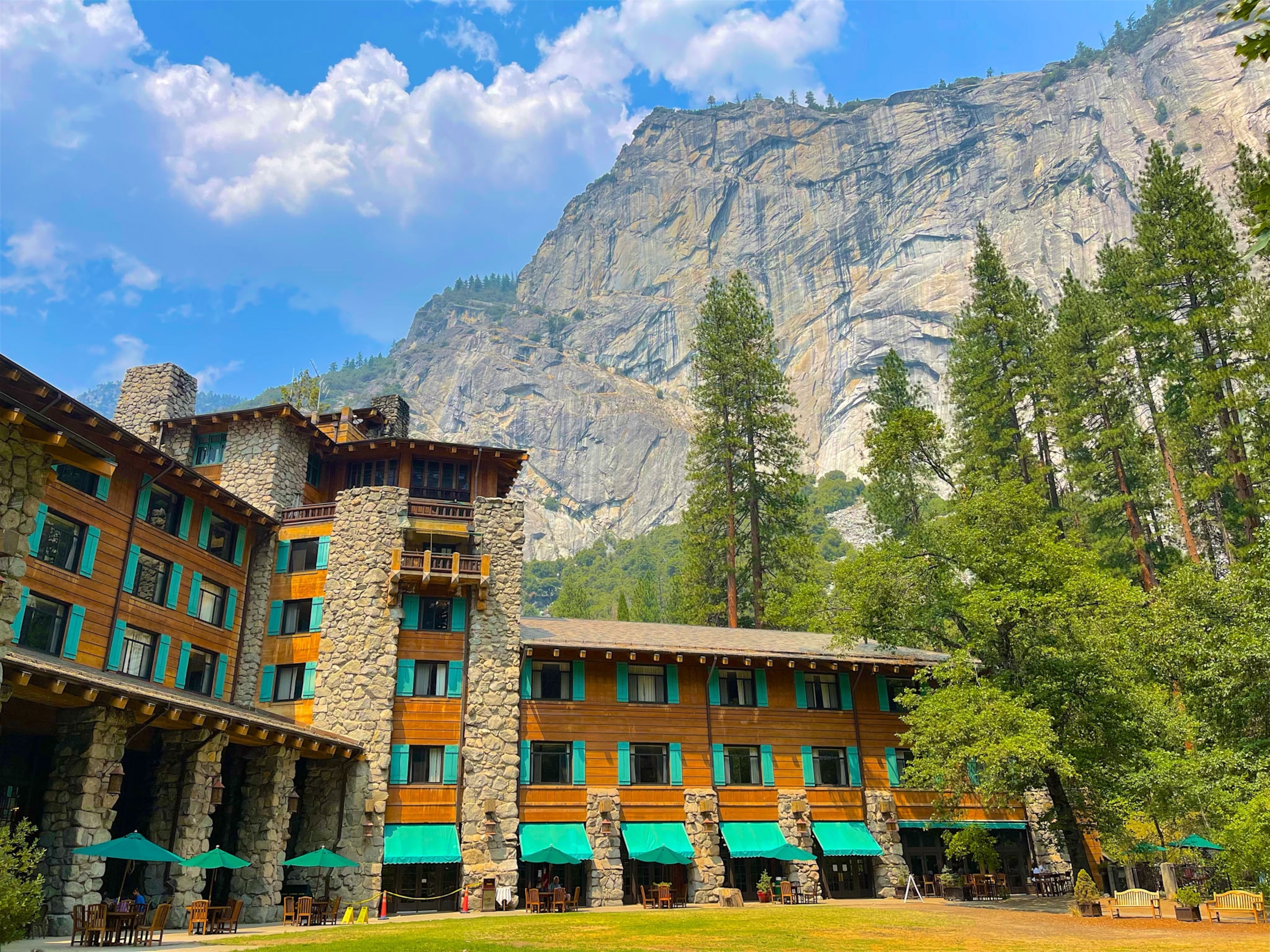
Wildfires show how climate change is transforming national parks
Drier landscapes, warmer weather, and intensifying fires may change America’s beloved landscapes forever.
Across the parched West this year there’s been an obvious—and destructive—signal that national parks are struggling to cope with a shifting climate: wildfire.
Through early October, nearly 8 million acres were torched, some by strikes of lightning, others by carelessness and arson. Many of the burned trees were already dead, killed by tiny beetles once kept in check by bitter winters that are rarely seen today. Although this year’s tally so far lags behind the 9.3 million acres burned in 2015, the wildfire trend in recent years is clear to land managers in the National Park Service (NPS) who are trying to cope with a climate that has brought their parks to “the extreme warm edge of historical conditions.”
There have been warnings. On a craggy ridgeline in northern Montana’s Glacier National Park, Grinnell Glacier is melting away, its trickling runoff filling a small lake. An estimated 150 glaciers coated this landscape in 1850; today the park holds 26. From 2015 to 2019, that glacial footprint shrank 68 percent, according to the U.S. Geological Survey. If a single national park were an icon of climate change, it would be Glacier, with its icy pools of meltwater.
When Jeff Mow arrived at Glacier as superintendent seven years ago, most would have called the park’s melting glaciers the key sign of climate change. But today, he says, “the real story of climate change for me has been wildfire.”
Fire managers are bracing for more intense fires on drier landscapes stressed by warmer weather. Many are preparing for blazes that will close parks and alter the landscapes that generations of visitors have come to know. Among park staffers, there’s no question that climate change is to blame.
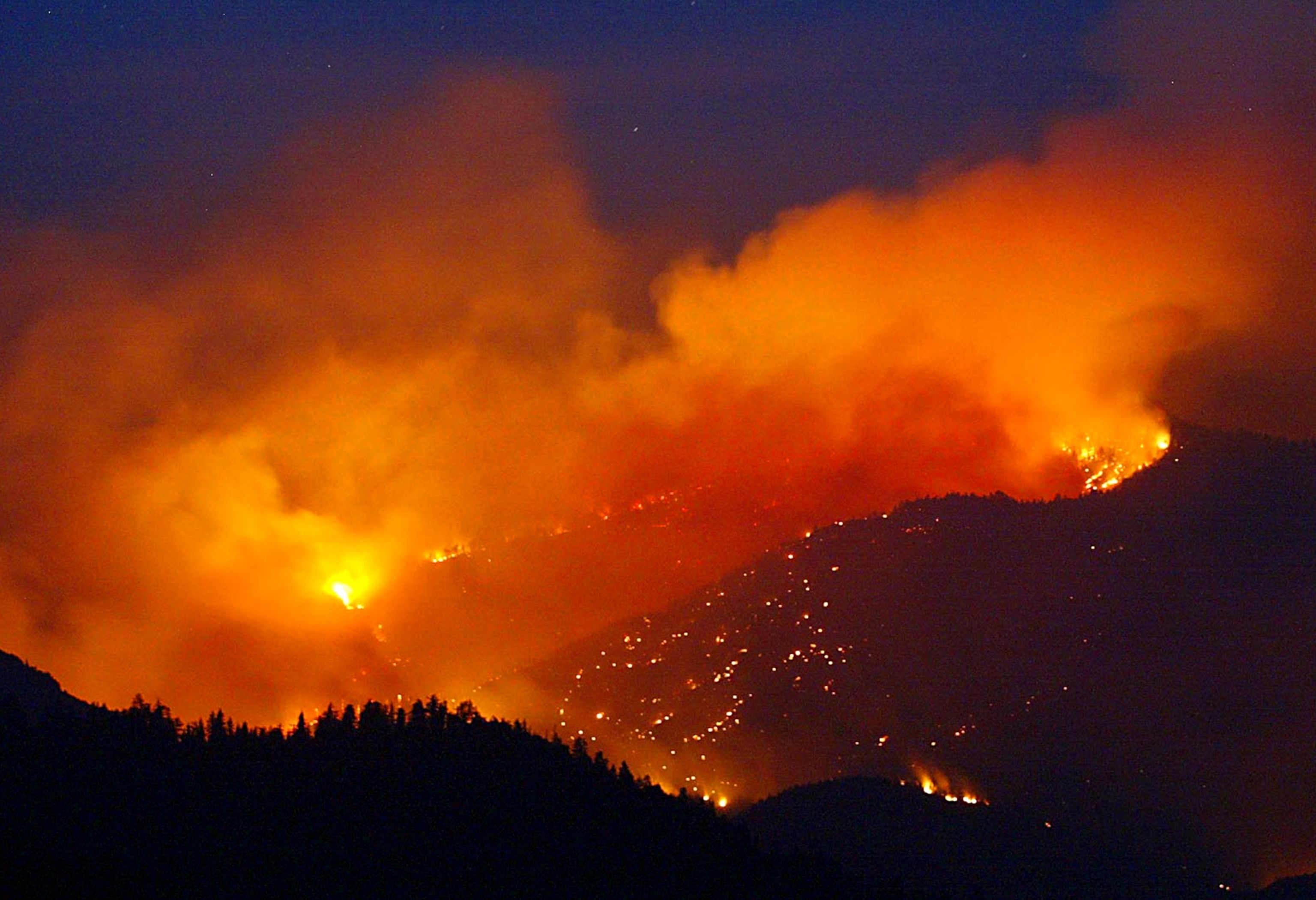
Parks on fire
When much of Yellowstone National Park burned during the summer of 1988, the calculus of how “climate change” might affect wildfires in the parks wasn’t widely discussed. But just as Yellowstone began to burn that summer, James Hansen, then director of the Goddard Institute for Space Studies, injected the term into the national lexicon during testimony to the U.S. Senate Energy and Natural Resources Committee.
- National Geographic Expeditions
Today it’s readily apparent how climate change is driving the intensity and duration of western wildfires. While Yellowstone’s fiery summer of ’88 ended with an early September snowfall, this October saw more than 65 major fires burning across the West. Canadian firefighters and nearly 250 U.S. Marines were summoned to assist the ranks of exhausted U.S. firefighters.
(Related: Here’s the science connecting wildfires to climate change.)
“We are entering this era where fires are becoming larger and more severe and more destructive,” says Jennifer Gibson, chief of resources and fire at Crater Lake National Park in southwestern Oregon. “2018 was on the map for some of the most destructive fires ever recorded, and most expensive fires in terms of damage, and now they’re just getting bigger. This year surpassed them again.”
Although this year saw few fires of significance inside the National Park System, the 5,000-acre Woodward Fire closed Point Reyes National Seashore in California for a time, and three fires surrounding Crater Lake in early September spurred preparations to evacuate the park. Rocky Mountain National Park weathered its largest blaze in history as the Cameron Peak Fire spread from nearby national forests to cover 6,500 remote acres in the park itself.
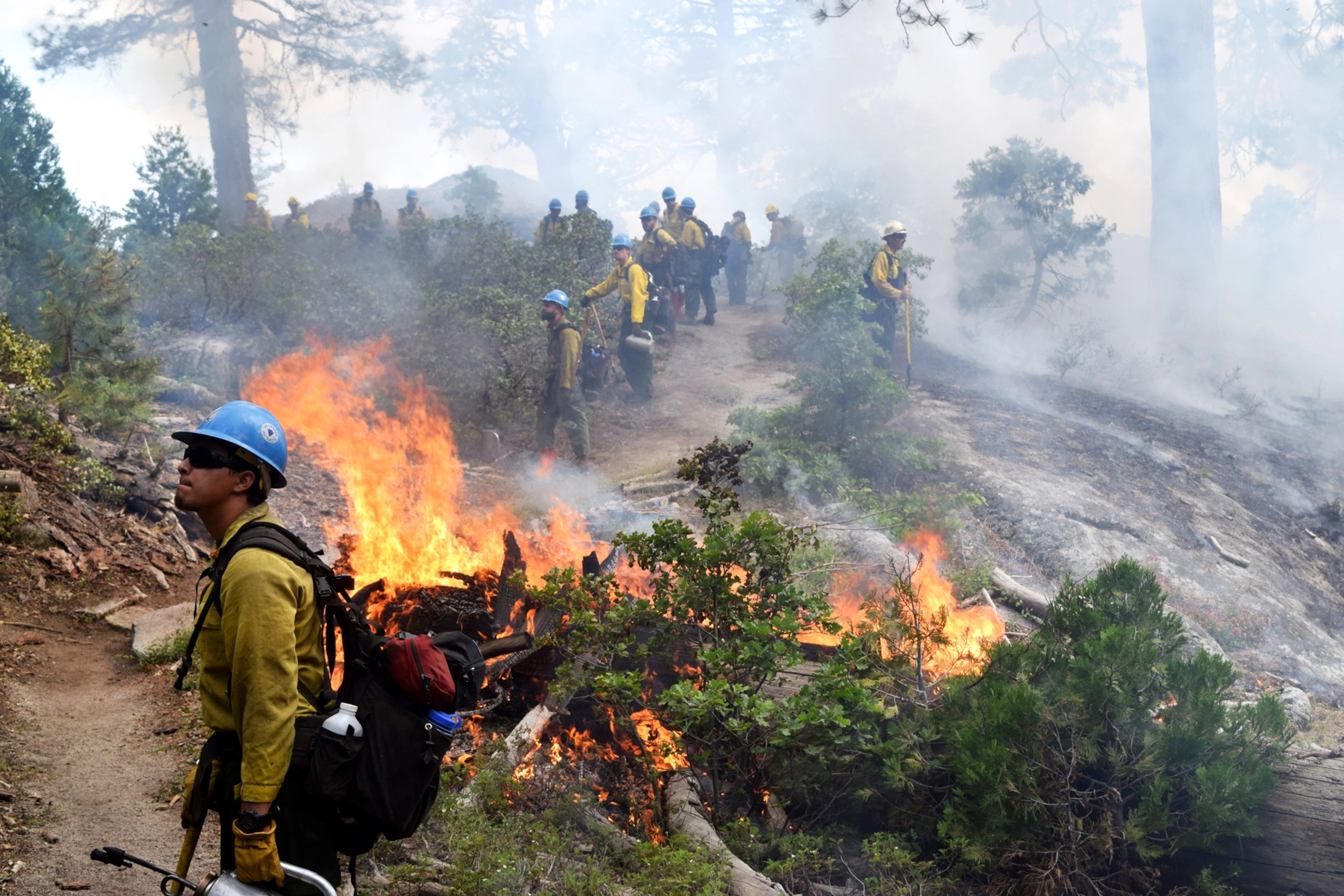
Fires also raged in Saguaro, Olympic, Sequoia, and Yosemite National Parks. Flames touched Yellowstone, Grand Canyon National Park, Mojave National Preserve, and Wind Cave National Park.
(Related: Here’s how breathing in wildfire smoke affects the body.)
September used to bring the first snows to Crater Lake and end the fire season. But now fires can burn year-round, says Crater Lake Superintendent Craig Ackerman.
He describes springtime fires caused by lightning strikes. “We had fires burning in trees that were surrounded by 10 feet of snow,” Ackerman says. “In one case we had a fire hold over an entire year, burning under the snow, and [it] popped back up in the spring when conditions were right.”
“I don’t use the term ‘new normal,’ because that means we’re approaching normal. We do not know what normal is going to be,” says Nate Benson, the acting branch chief of wildland fire at the National Interagency Fire Center, the Idaho-based center that coordinates the nation’s wildfire firefighting efforts.
“We’re at a beginning, and we’re seeing the ramifications of climate change,” Benson says. “We’re going to have to continue to live and respond […] and have a better understanding of what we can do.”
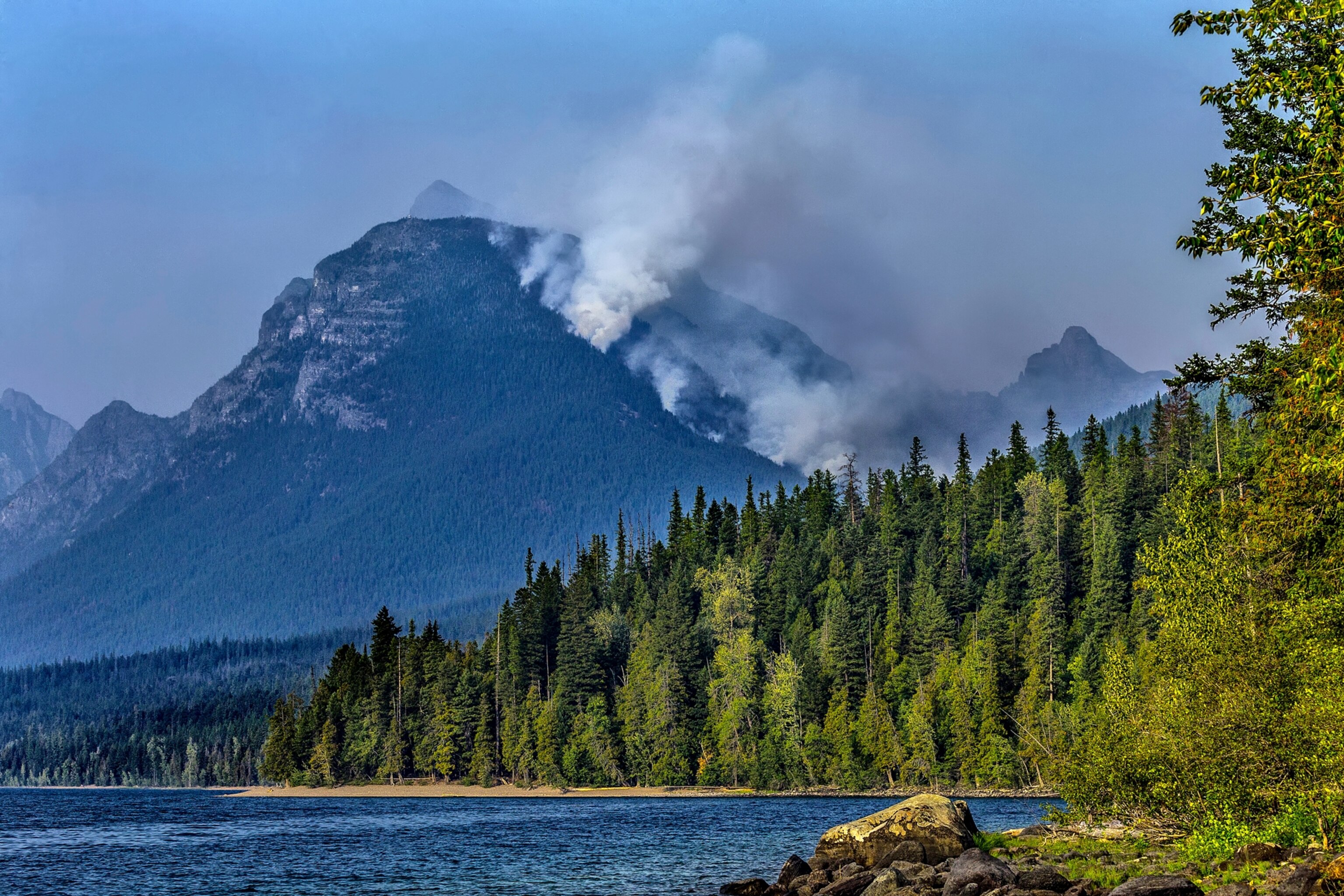
Fighting back
Wildfires’ increasing ferocity has some park managers going acre-by-acre to prioritize fire prevention, even encouraging the replacement of highly combustible lodgepole pines with less flammable aspen stands.
“Aspen are a lot moister; they don’t have the same leaf structure,” says Mike Lewelling, Rocky Mountain National Park’s fire management officer. Where a lodgepole’s oils set its needles burning “like gasoline,” Lewelling explains, aspens are more “like a heat sink. I’ve seen it burn, but it doesn’t burn at the intensity lodgepole does.”
(Related: Here’s how wildfires get started—and how to stop them.)
Park managers try to minimize fire danger by reducing fuel loads, using fire-resistant architectural treatments on some structures, and (when necessary) resorting to irrigation systems that suck water from nearby lakes or tanker trucks to wet down landscapes around buildings.
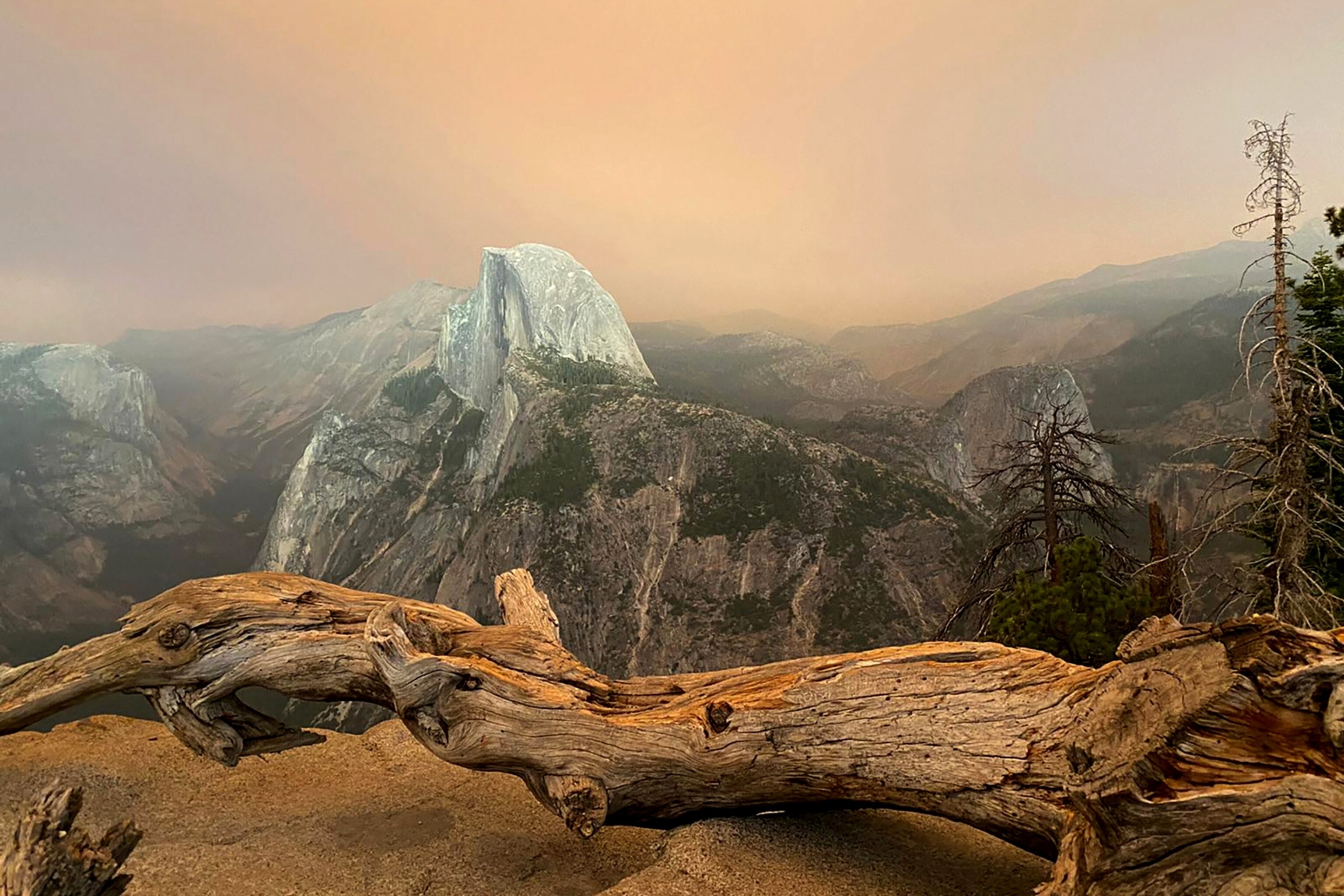
When the Sprague Fire spread across Glacier National Park in 2017, burning down a chalet in the process, crews pumped Lake McDonald water through an industrial-strength system to protect another lodge.
“It essentially restored the sort of rainforest kind of environment around the Lake McDonald Lodge that, quite honestly, the lodge probably hadn’t seen in decades,” says Glacier’s Mow.
At Yellowstone, Superintendent Cam Sholly described his park’s new 10-year plan to reduce fires—strategies that many other Western parks are duplicating. Crews remove downed trees and forest litter in spots close to the park’s developed areas, making it harder for flames creeping along the ground to reach the canopy of a forest and fuel a major conflagration. Intentionally set “prescribed burns,” long an Indigenous practice, also reduce fuel loads. And lightning-caused blazes that don’t threaten developed areas, like this year’s 4,100-acre Lone Star Fire, sometimes are left burning to clear out debris and aid forest health.
In 2019, crews reduced fuels across 60 acres of the park at West Yellowstone; this year, staff targeted more than 300 acres across Yellowstone’s front-country. After developed areas are treated, Sholly says, they’ll “be put into a maintenance treatment schedule lasting in perpetuity.”
The road ahead
But the lodgepole forests that stand in Yellowstone and many other Western parks evolved with fire, and so fire is inevitable.
“There’s no surrogate for fire in lodgepole,” points out Rocky Mountain’s Lewelling. “It’s an all-or-nothing-type forest stand. Mother Nature created lodgepole to all burn at the same time.”
(Related: As wildfires ravage Napa Valley, will California’s wine industry survive?)
“Now when you have a fire, it’s a stand-replacing fire. It burns everything,” echoes Crater Lake’s Ackerman. Although there are some areas the park can protect, not everything will be saved.
How NPS battles these conditions could vary from park to park—or even within a single park, if staff choose to let backcountry fires burn while front-country and developed areas are aggressively defended. Prescribed burns are another increasingly used tool.
As lodgepole forests burn, and as subsequent fires sometimes reburn those same areas, change is coming to national park landscapes. It might be in replacing lodgepole forests with aspen glades—as Lewelling is encouraging at Rocky Mountain—or grasslands springing up where repeated fires prevent forests from taking root.
“Nature doesn’t care,” Ackerman says. “Eventually those forests will come back in 500 years, and look just like they did 500 years ago. But in our lifetime, it will be a catastrophe.”





